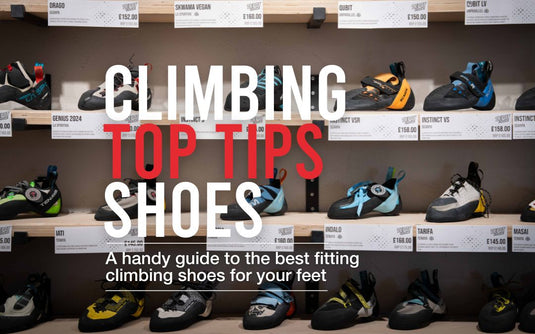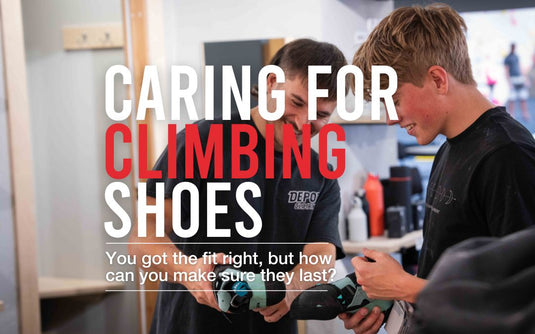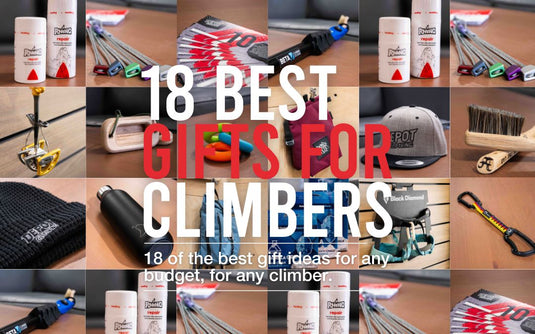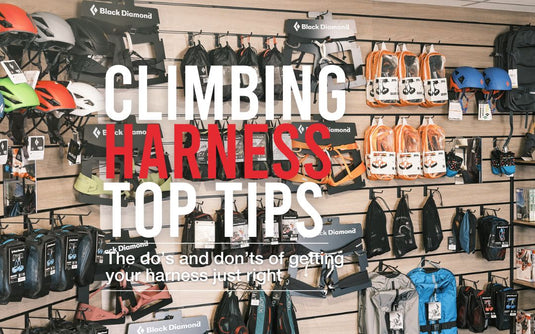Get Your Climbing Shoes To Fit Perfectly
Navigating your way through the myths, misconceptions and hearsay when it comes to climbing shoes can be tricky. That’s because our feet, just like snowflakes, are unique!
At Depot Cimbing, we endeavour not only to stock (what we think is) the best climbing shoe range on the market, but help you find the right fit too. That’s why we offer comprehensive in-person advice and fitting in our climbing centre stores, but what if you just want some help and aren’t a Depot climber?
Fear not, for we have collated the most important tips to help you cut through the plethora of misunderstandings and misconceptions about climbing shoes. Read on for the best advice you can get outside of a personalised shoe fitting.
1. The best shoe in the world is the shoe that fits you the best
This doesn't just mean the shape, but also making sure it’s the right fit for what you're doing.
Are you bouncing and running on volumes? Maybe you're doing long sustained climbs on a trad route?
Different shoes have different properties, so you need to match the shoe to what you're doing, not just the shape.
You might also be a taller, heavier climber, so you would need a stiffer shoe as you may have bigger feet, meaning you need more substantial support under the arch of your foot.
2. A good-fitting heel isn't always a full heel
This is often misunderstood, and one of the most common complaints about climbing shoes.
A good fitting heel should fill the heel when your knee, toe and heel are engaged. To test this away from the wall, sit on a chair and bring your toes as close to your knee as possible in front of you.
When the foot is in a neutral standing position, your heel should be in contact with the bottom of the heel, and the tension band surrounding it should be taught but not applying significant pressure on your Achilles tendon.
The sides may be a little baggy at this point, but the important bit is that the tension band is on correctly, as that is what stops the shoe from coming off your foot.
This also prevents too much pressure on the Achilles and helps prevent injury.
3. Size doesn't matter
Climbing shoe brands are made completely differently from street shoes, and so the sizing is different too, and not just when compared to your street shoe size, but also when comparing different brands.
Because of this, there is a common myth that you need to ‘downsize’ as much as possible, but you really don't, just go with the ones that fit you best!
Some climbing shoes do stretch, but mostly in width, and definitely not length.
There have been a lot of changes in shoe stretching in recent years, with an increased use of synthetic materials by brands over leather in lots of climbing shoes. Stretching in leather shoes is something to bear in mind, but it does not mean you should go as small as possible.
4. Climbing shoes should not be painful
Many high-end performance shoes will be uncomfortable, but they shouldn't be painful.
This difference is very important! If they are painful, you're probably wearing them too small or wearing the wrong shoe style for your foot.
You will climb your best when you are confident and comfortable. Finding the right shoe is all about striking the balance between being tight enough to perform, but loose enough that you aren’t causing damage to your feet.
The fit in all shoes should be snug, with no areas of pressure or pain, but equally no air pockets or bubbles with a bent toe.
5. You do need to have your toes bent, but you shouldn't sacrifice your toenails to do it
Controversial, but having toenails is a good thing! If your shoes are so tight that your toenails are falling off, please buy bigger shoes!
If you are going to stand on the very edge of your shoe, your toes do need to be bent and held in position, as this is the strongest position. Think when you stand on your tip toes, your toes grip the floor and bend.
We're mimicking that in a climbing shoe, but one step further, by holding your toes in that position, you can stand effectively on tip toes on a very small edge. However, each shoe's toe box is designed to have your foot in a very particular position.
Some are more bent than others, often being referred to as ‘aggressive’ shoes, these performance shoes hold your toes almost as bent as possible but with different brands being different shapes the trick is to match the shoe to your natural bend rather then trying to force your foot to accommodate something it isnt naturally made for.
This will also save your toenails!
6. Gender isn't a factor when it comes to fitting climbing shoes
Although many brands have traditionally had ‘men’ and ‘women’ ranges, many are now moving away from this because it just isn't relevant.
What matters is your height and weight. Many of the so-called ‘women's fit’ are either lower volume, made of softer rubber or have lighter heel tension. Sometimes all three!
7. You can wear socks if you want to
Traditionally, climbing shoes have been worn without socks, and many manufacturers recommend it simply because it means you can get a closer fit to your foot, so the shoe, especially super soft ones, gives you more sensitivity.
A lot of climbing shoe lasts are also closer to socks than shoes, so you can find that when wearing socks, the seams are in the same place inside the shoes, and so can cause rubbing.
But if shoes with no socks give you the ick and you prefer socks, go for it! To remove any discomfort, thin seamless athletic socks are a great option to make you don't get those pesky seams that cause harm.
But really with socks... it’s just personal preference!
So there you have it, 7 simple steps to finding the best fitting climbing shoes for your feet. Still unsure? We offer a shoe fitting service in our centres.
Find your local Depot Climbing wall here.
Or check out our comprehensive range of climbing shoes here.
We make sure we carry styles suitable for all climbers, at any stage of their climbing journey.



